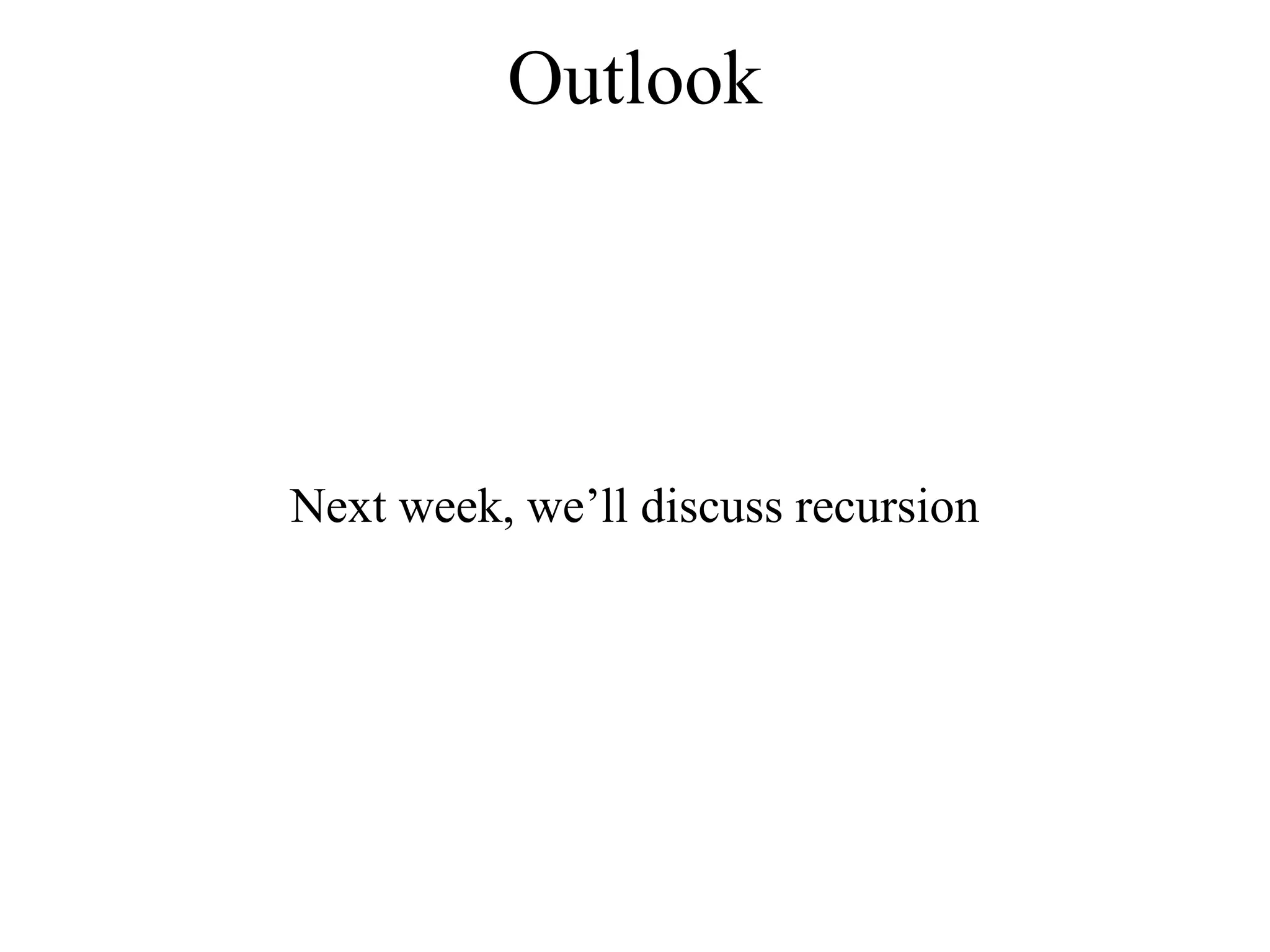The document discusses various sorting algorithms. It begins by explaining the motivation for sorting and providing examples. It then lists some common sorting algorithms like bubble sort, selection sort, and insertion sort. For each algorithm, it provides an informal description, works through examples to show how it sorts a list, and includes Java code implementations. It compares the time complexity of these algorithms, which is O(n2) for bubble sort, selection sort, and insertion sort, and explains why. The document aims to introduce fundamental sorting algorithms and their workings.
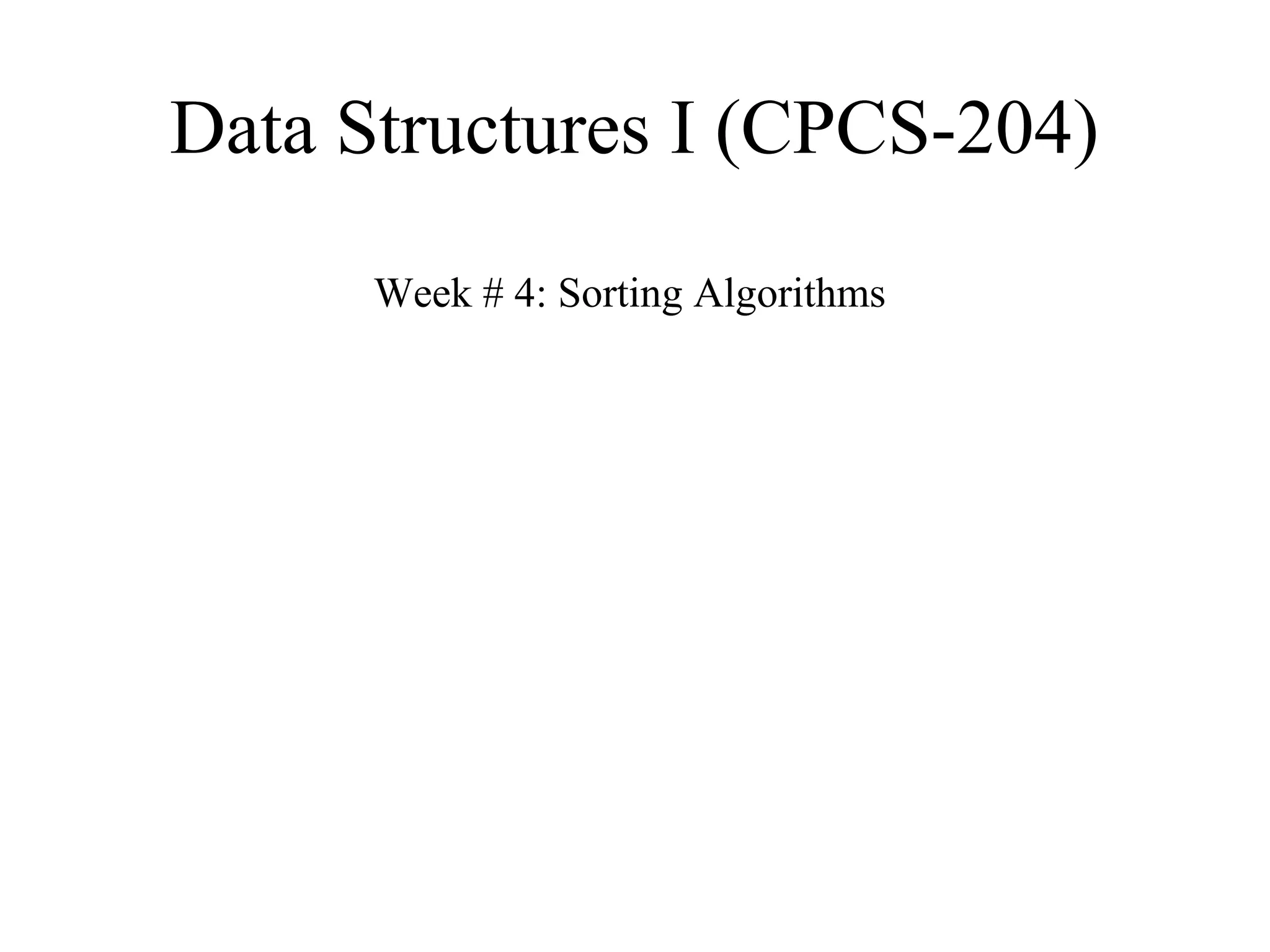
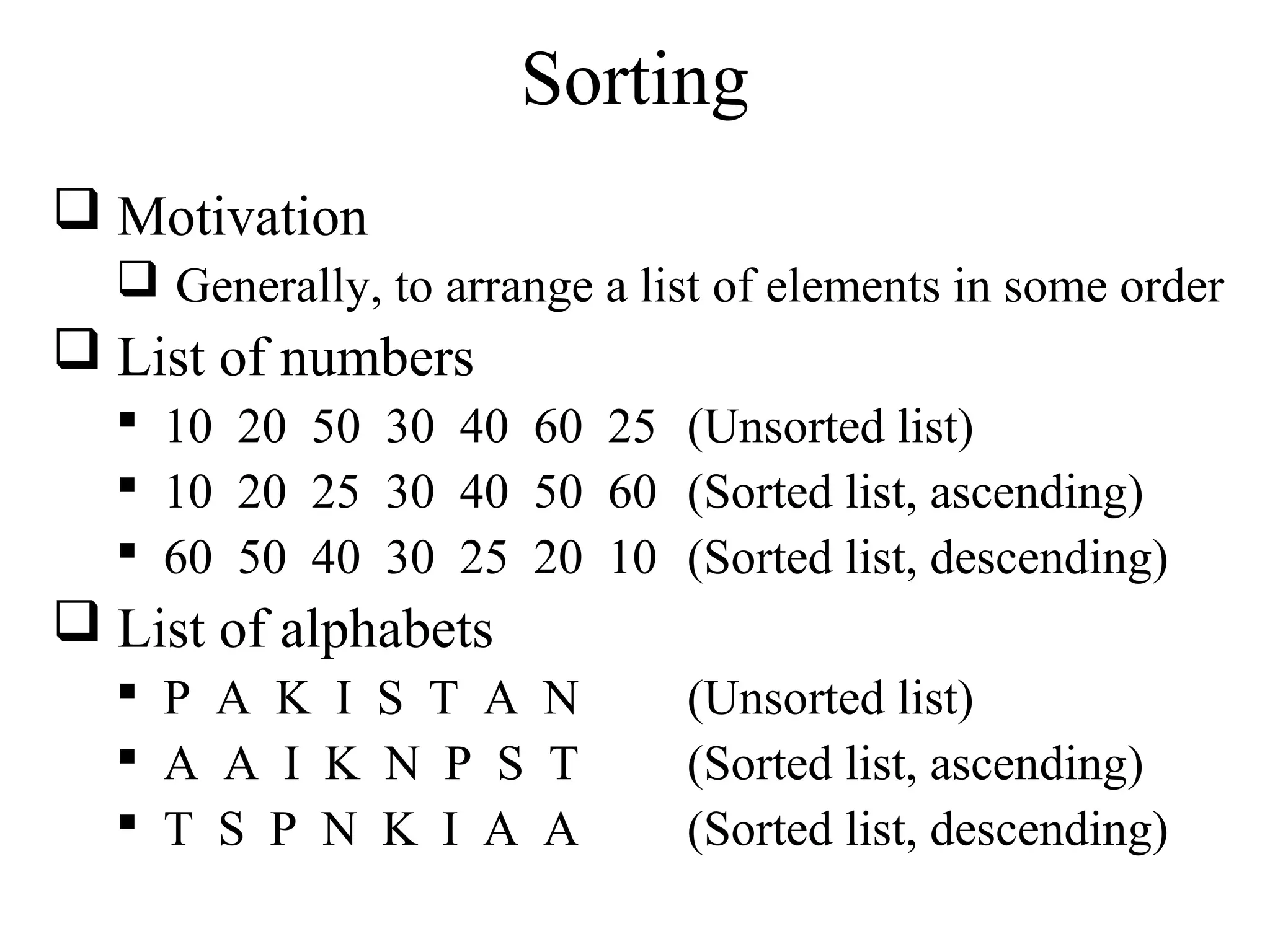
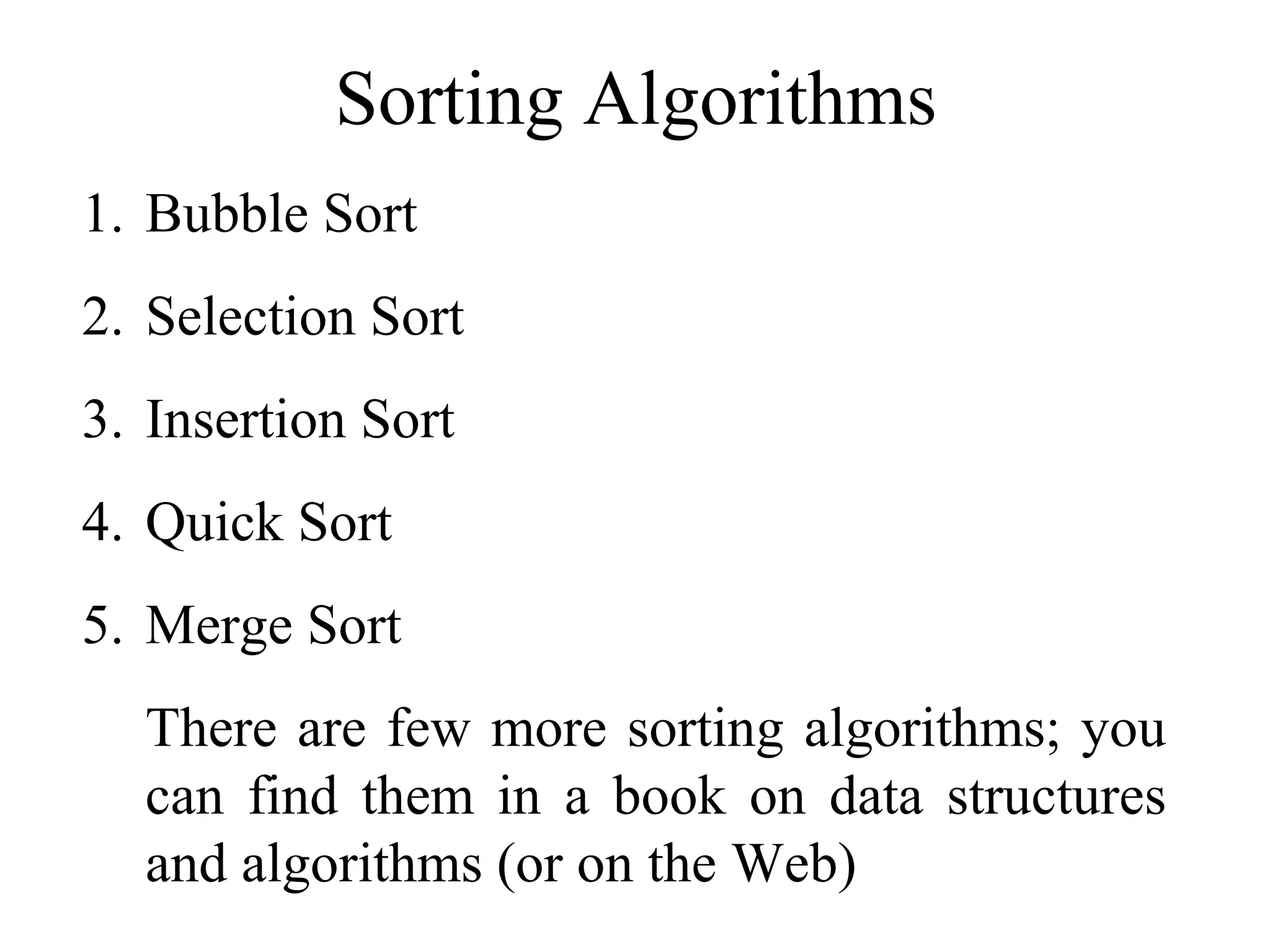
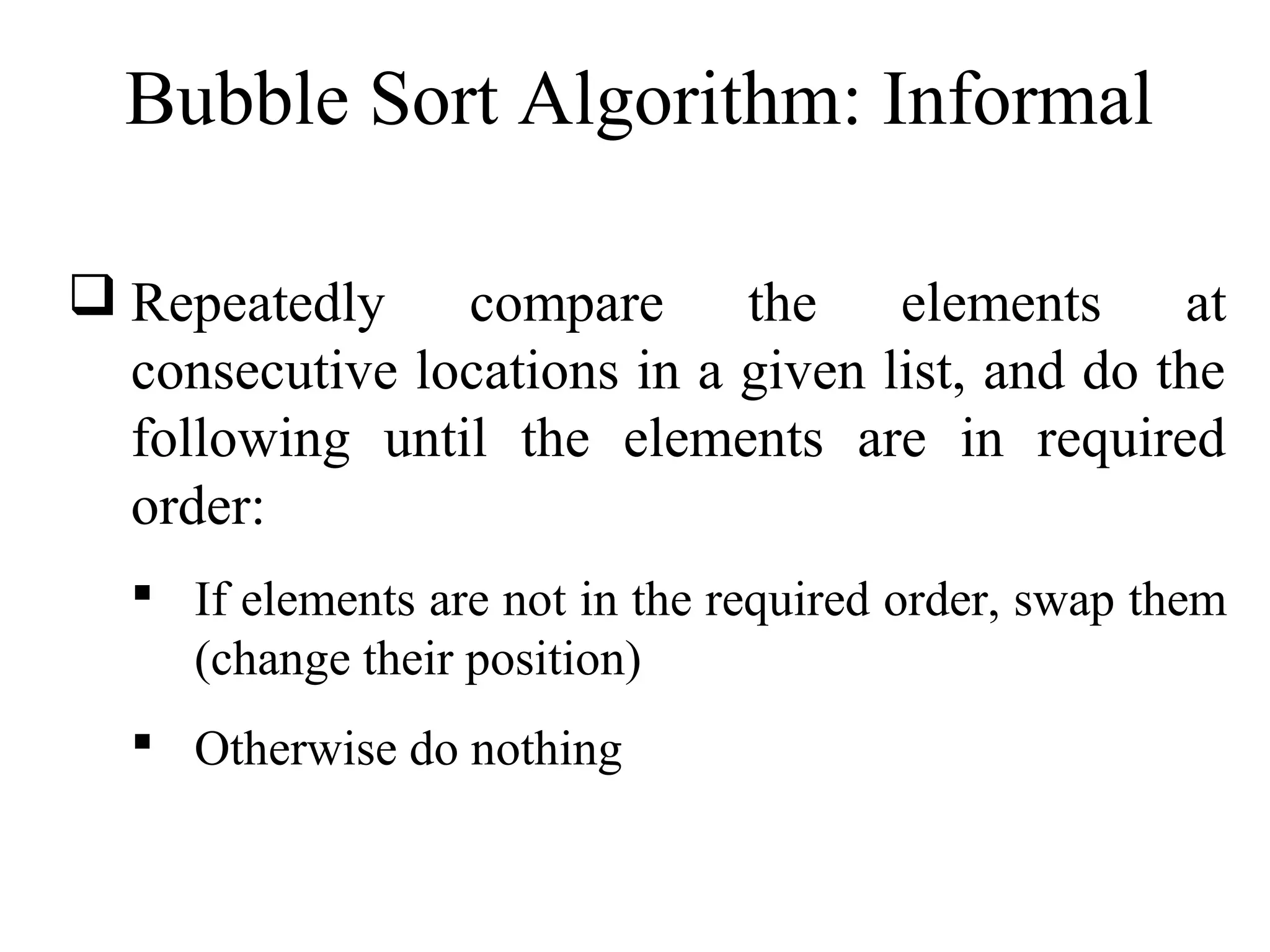
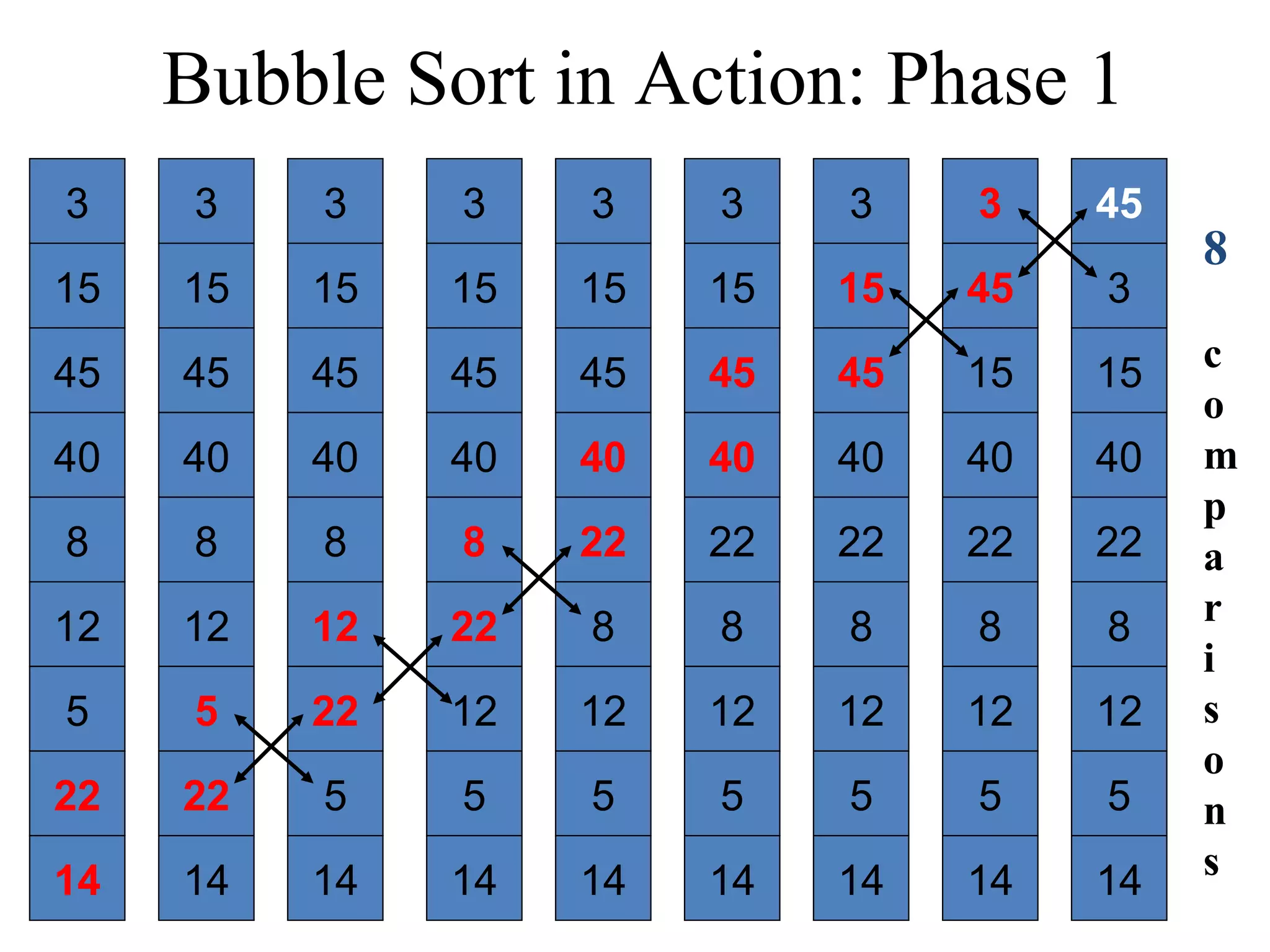
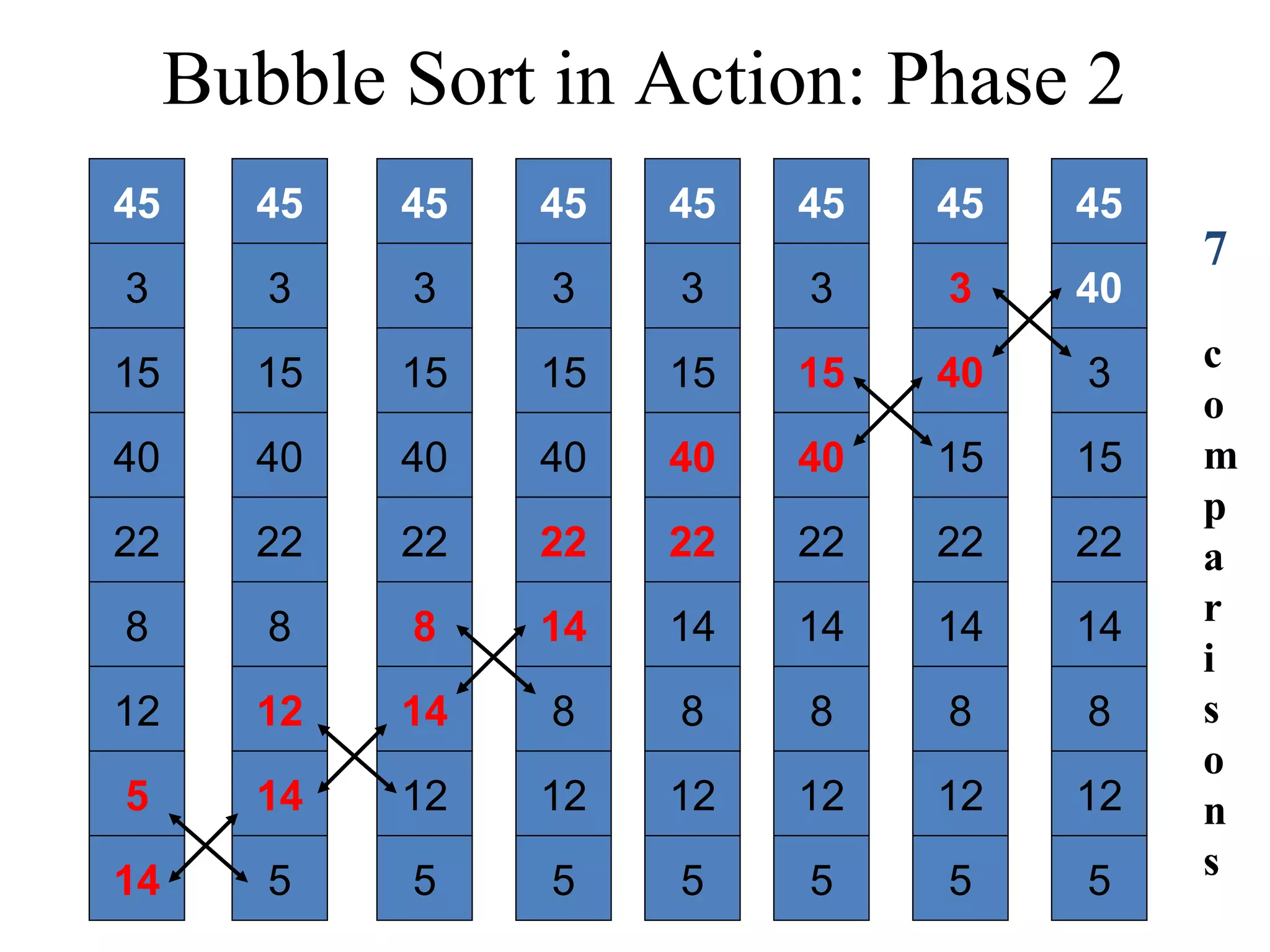
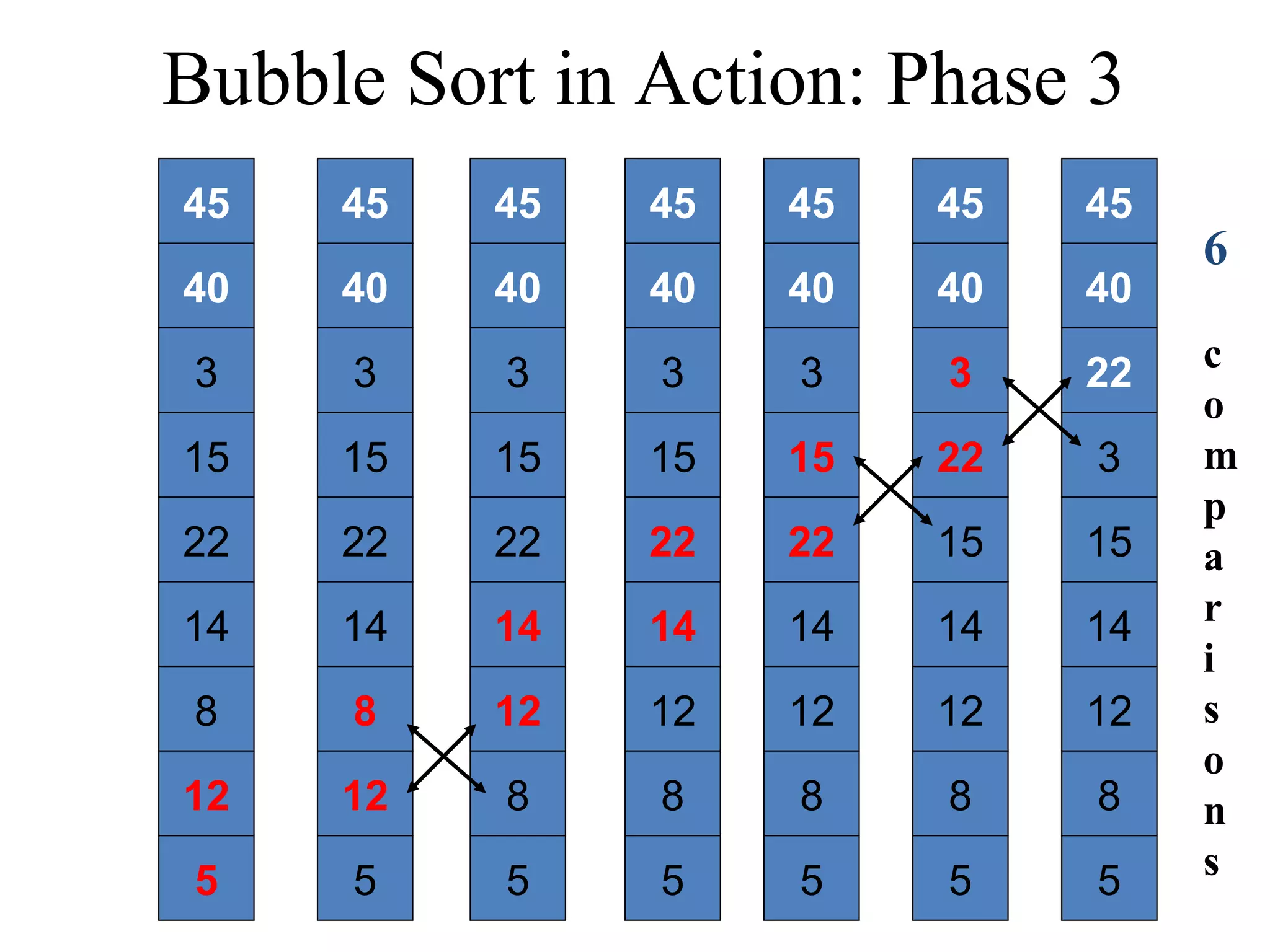
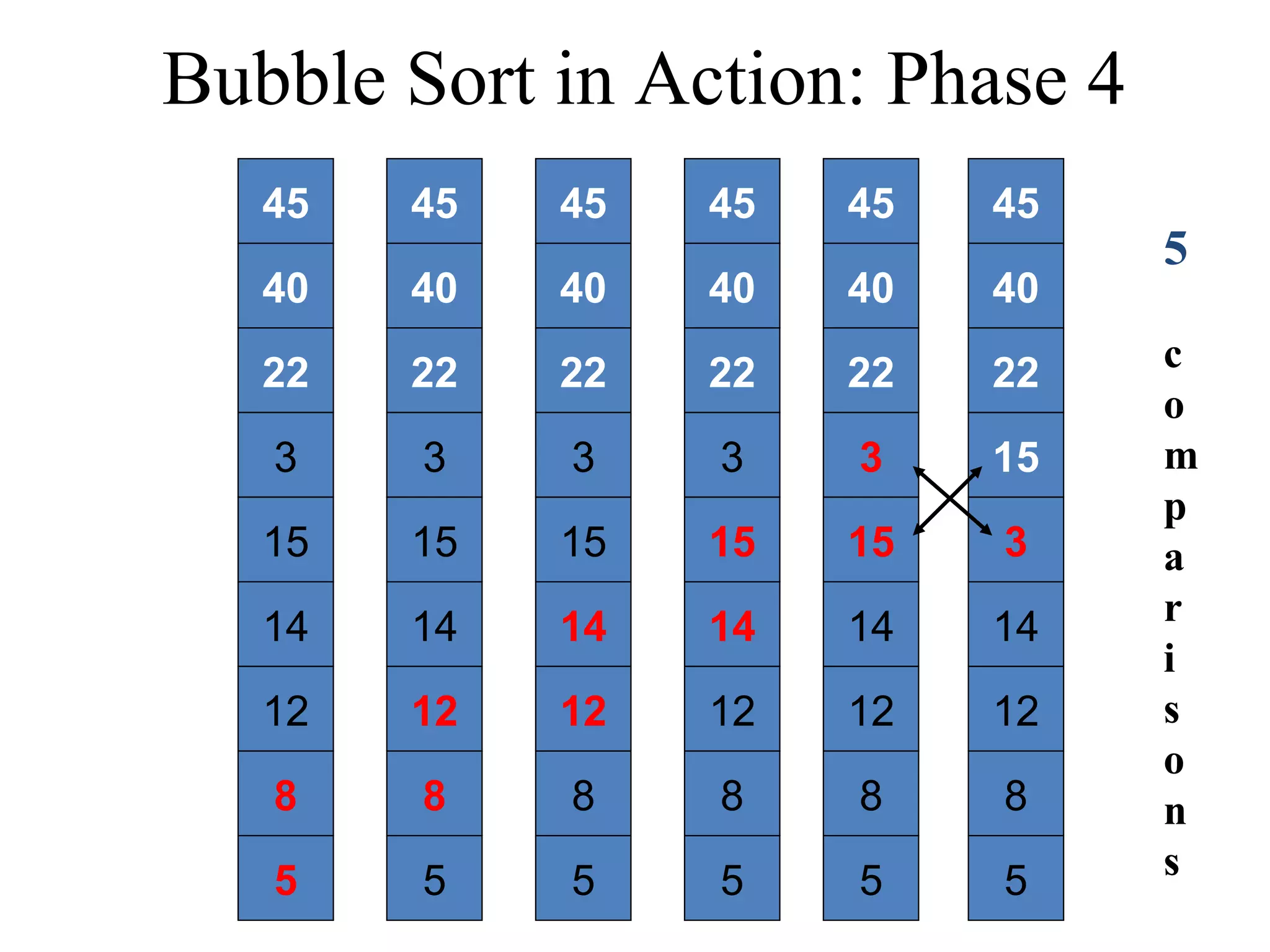
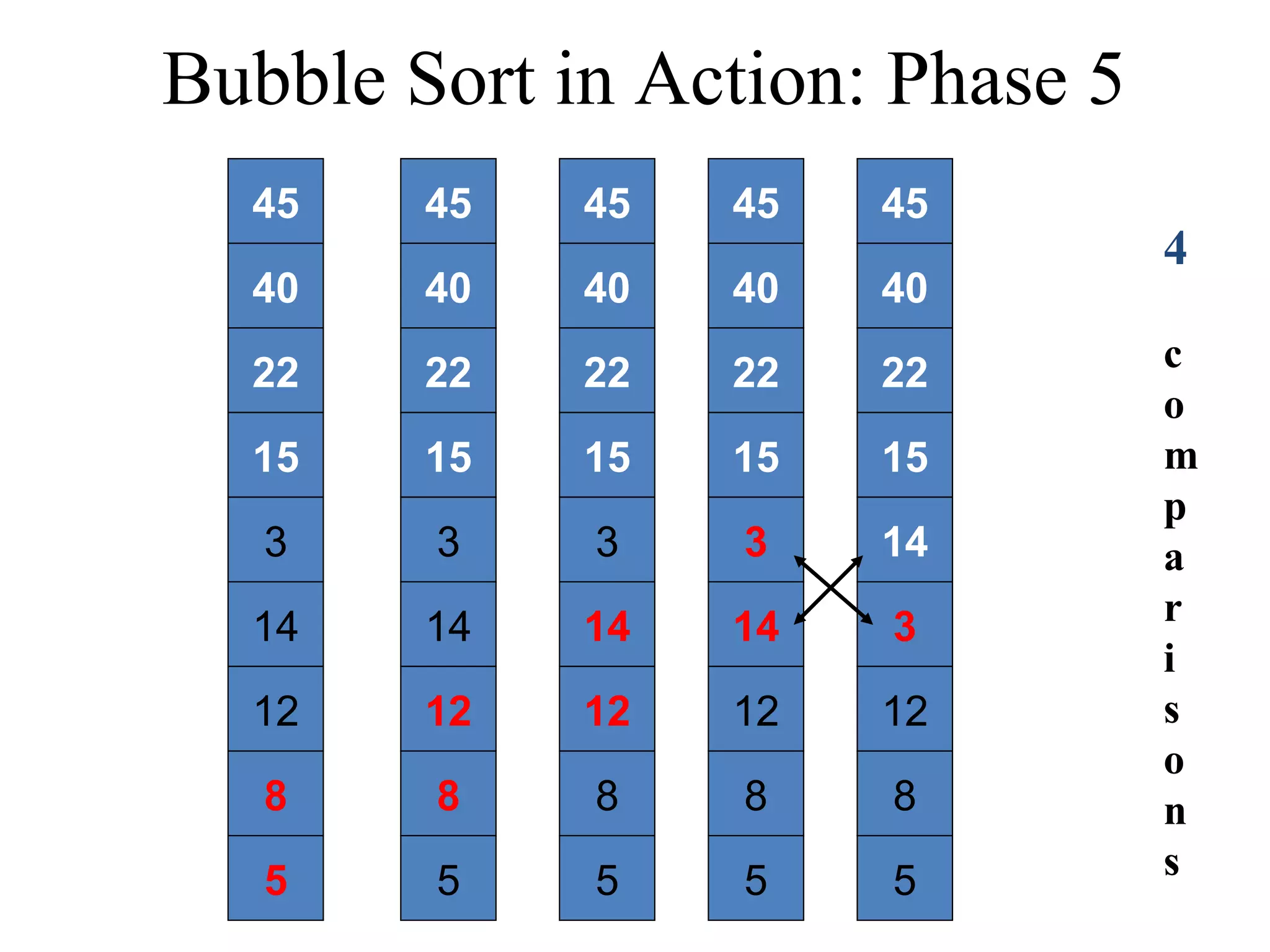
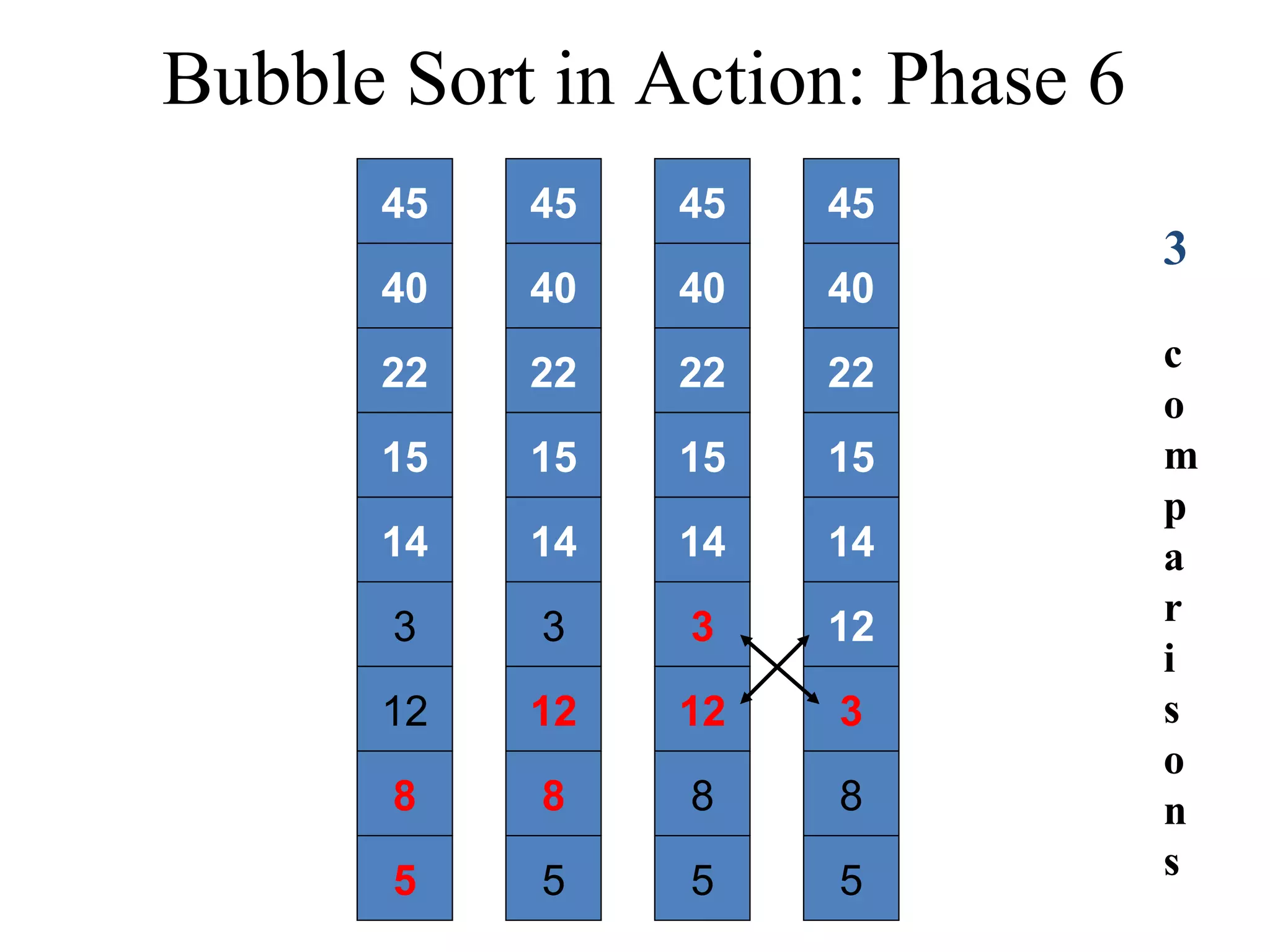
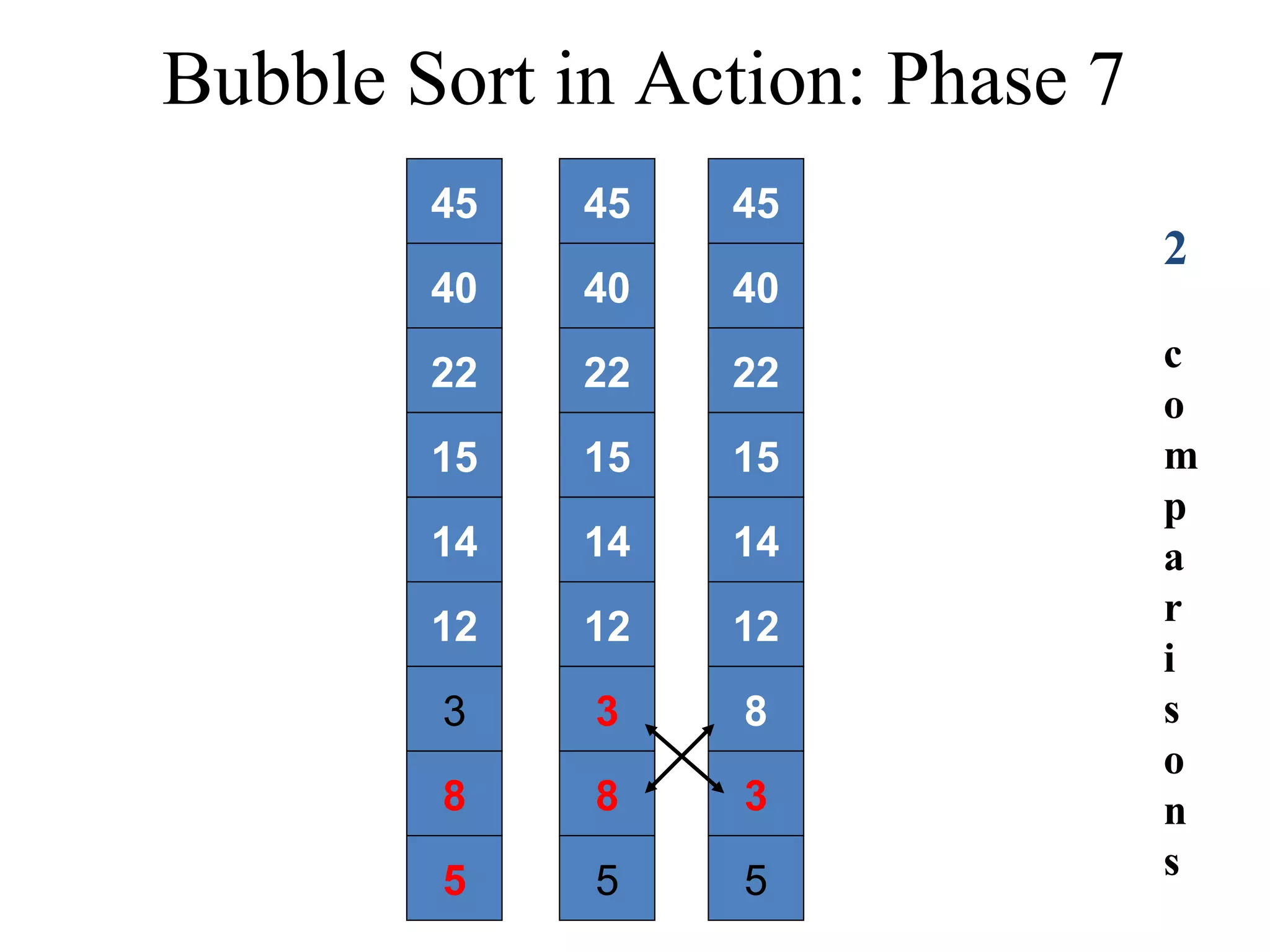
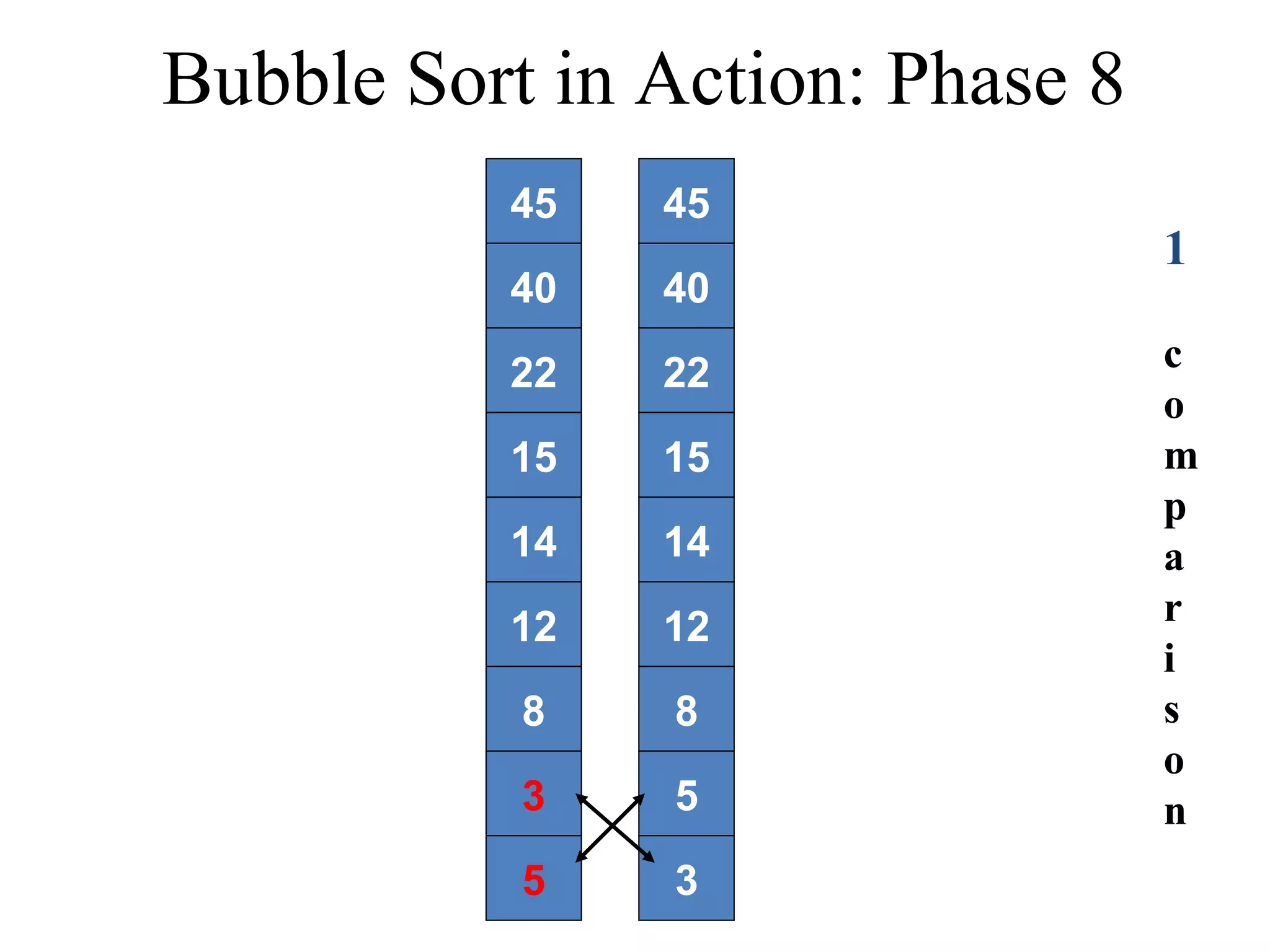
![Bubble Sort Algorithm in Java
void bubbleSort(int List[]){
int temp;
int size = List.length;
for (i = 0; i < size - 1; i++)
for (j = 0; j < size – (i + 1); j++){
if (List[j] > List[j+1]){
temp = List[j];
List[j] = List[j+1];
List[j+1] = temp;
}
}
}
}
Time complexity of the Bubble Sort algorithm is O(n2). Think why?](https://image.slidesharecdn.com/part4basicsortingalgorithms-140828232256-phpapp01/75/Data-Structures-Part4-basic-sorting-algorithms-13-2048.jpg)
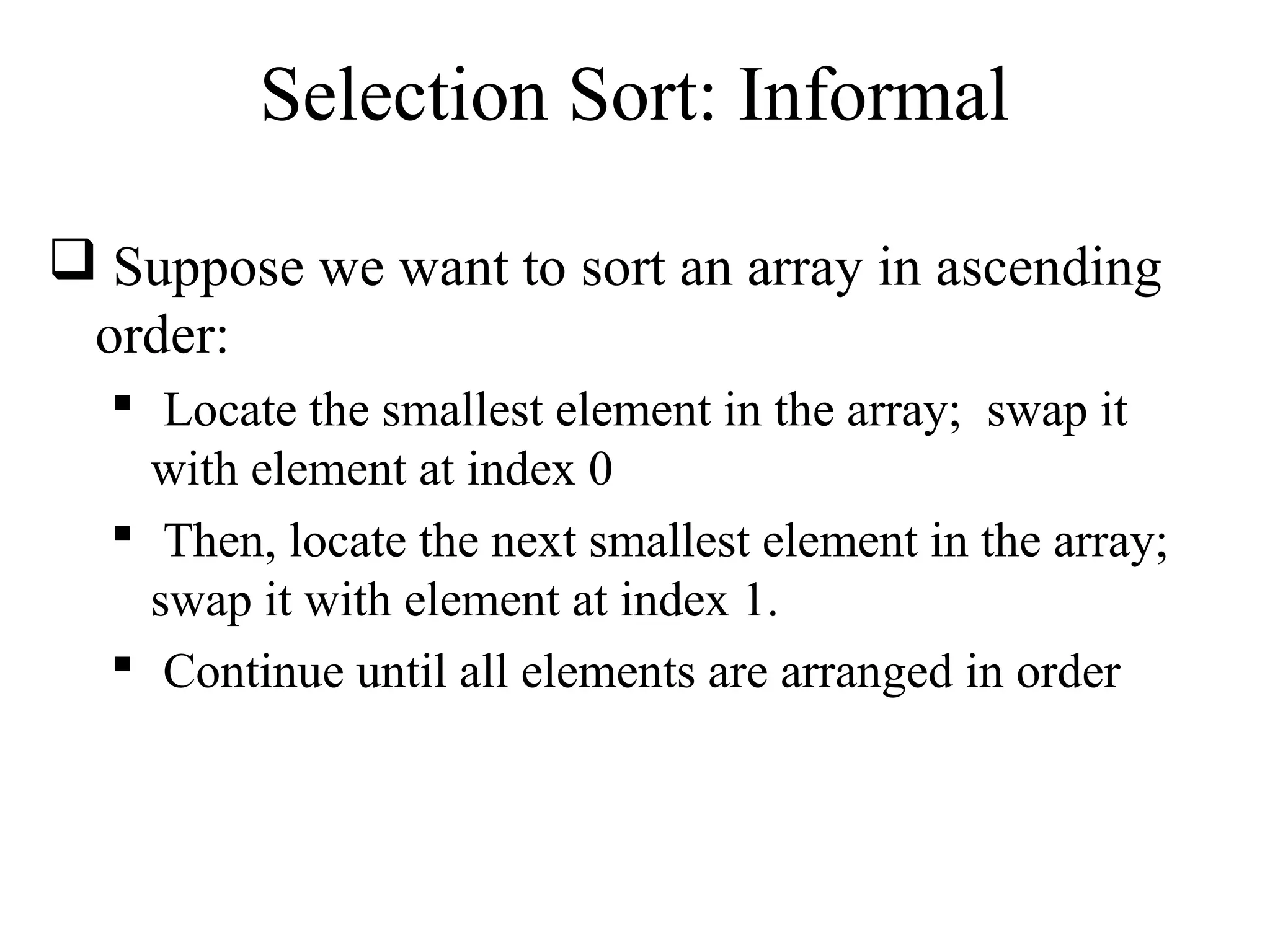
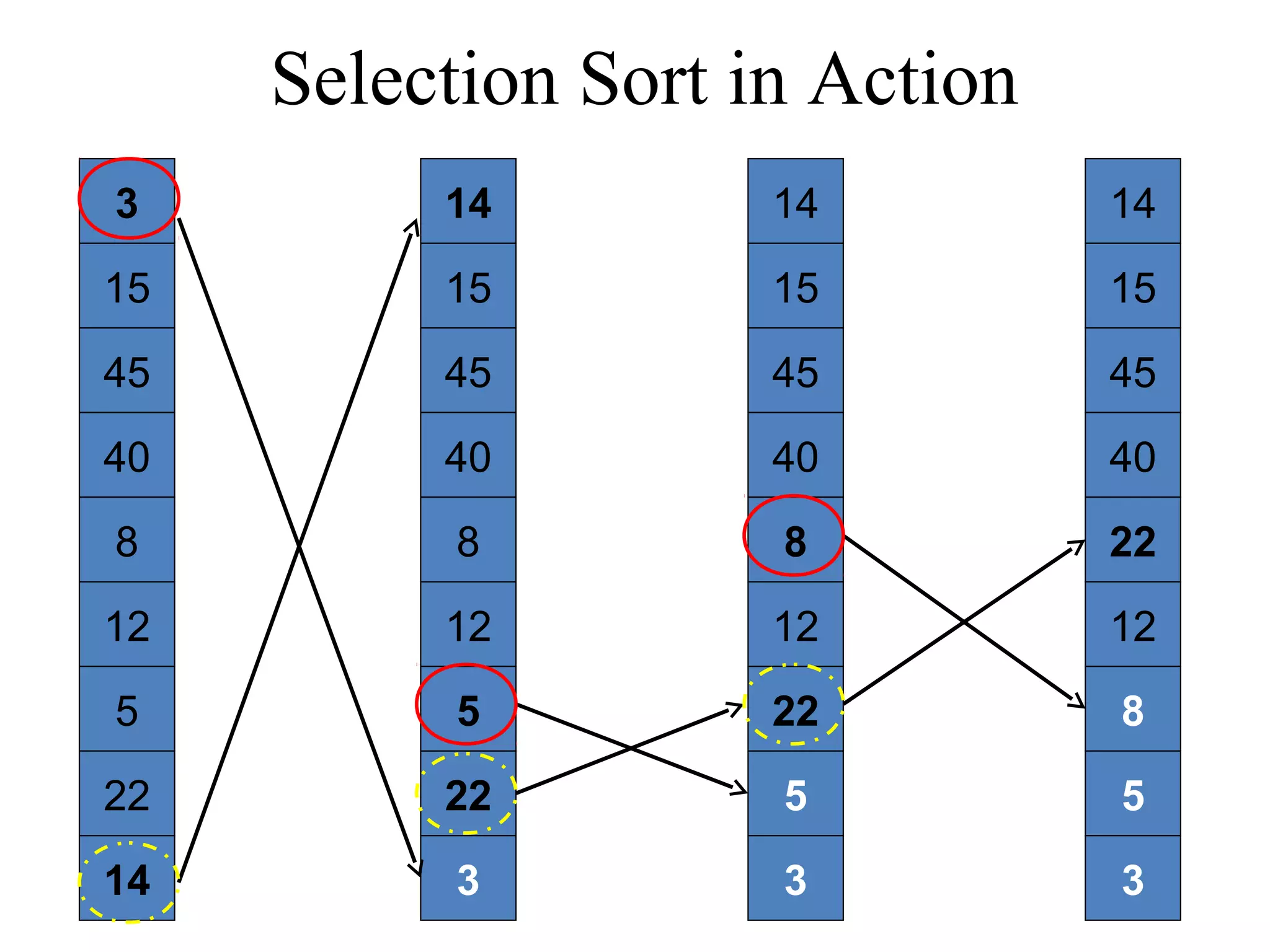
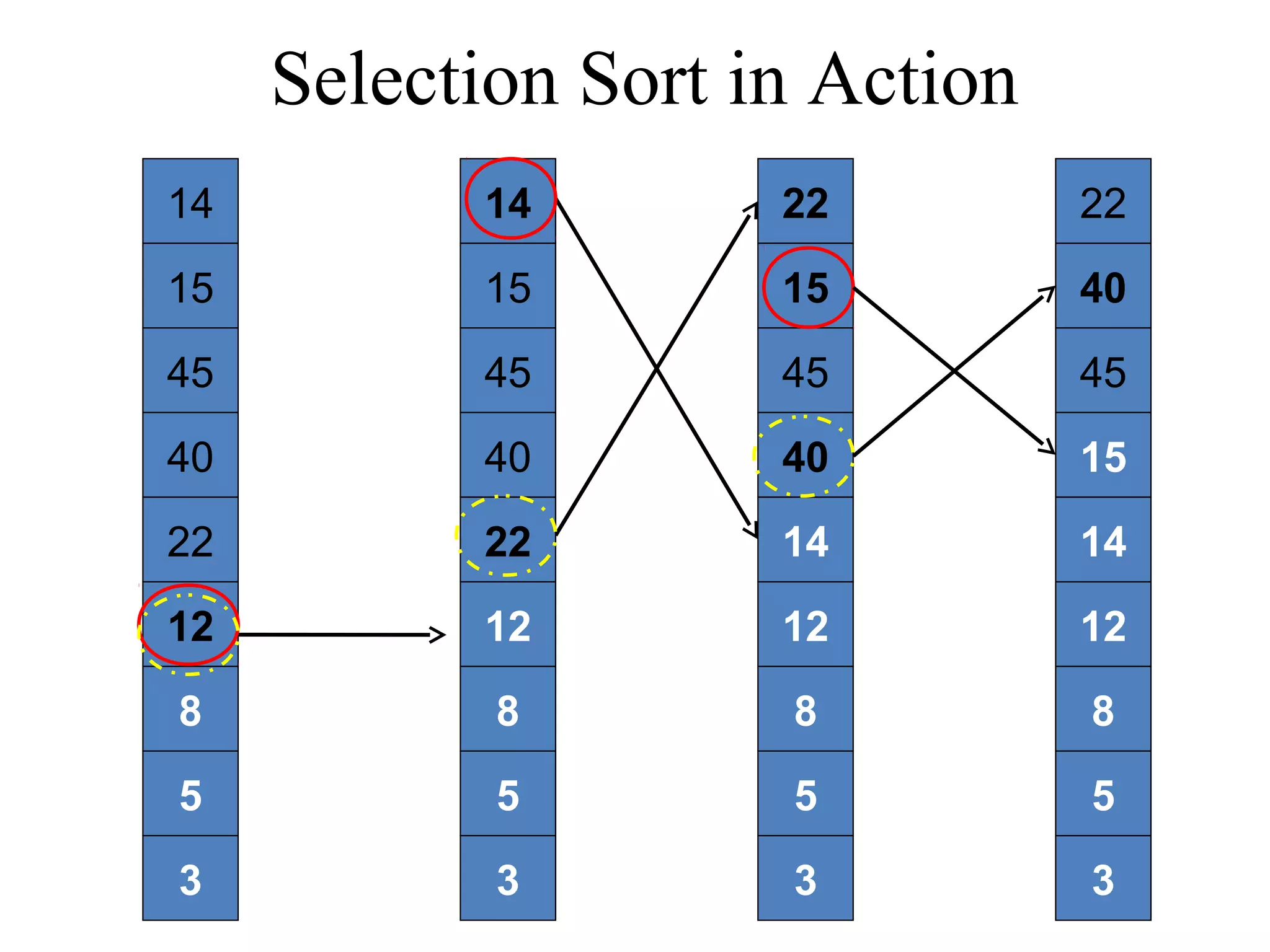
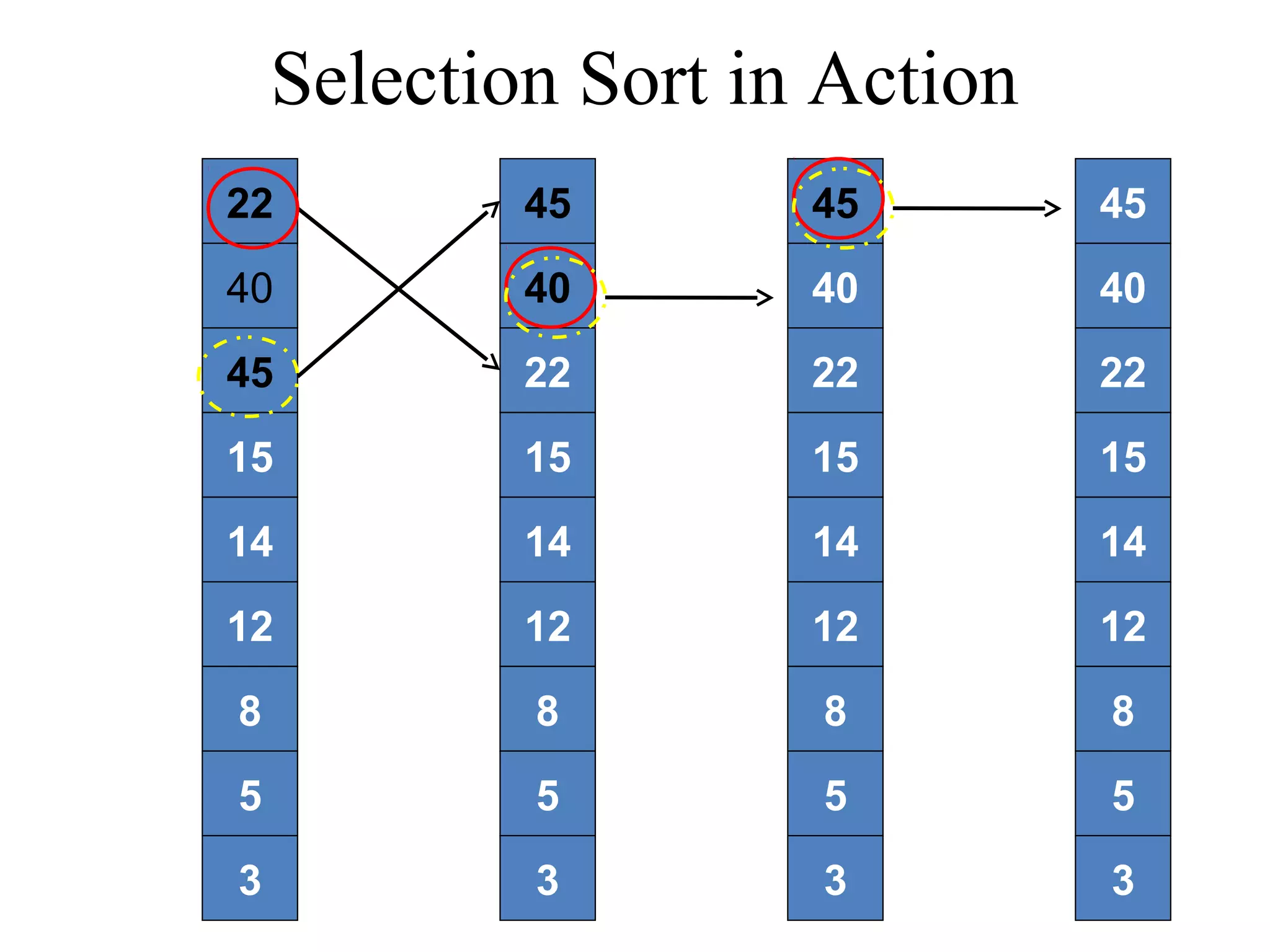
![Selection Sort Algorithm in Java
void selectionSort(int List[]){
int temp, min;
int size = List.length;
for (i = 0; i < size; i++){
min = i;
for (j = i + 1; j < size; j++){
if (List[j] < List[min]){
min = j;
}
}
temp = List[min];
List[min] = List[i];
List[i] = temp;
}
}
Time complexity of the Selection Sort algorithm is O(n2). Think why?](https://image.slidesharecdn.com/part4basicsortingalgorithms-140828232256-phpapp01/75/Data-Structures-Part4-basic-sorting-algorithms-18-2048.jpg)
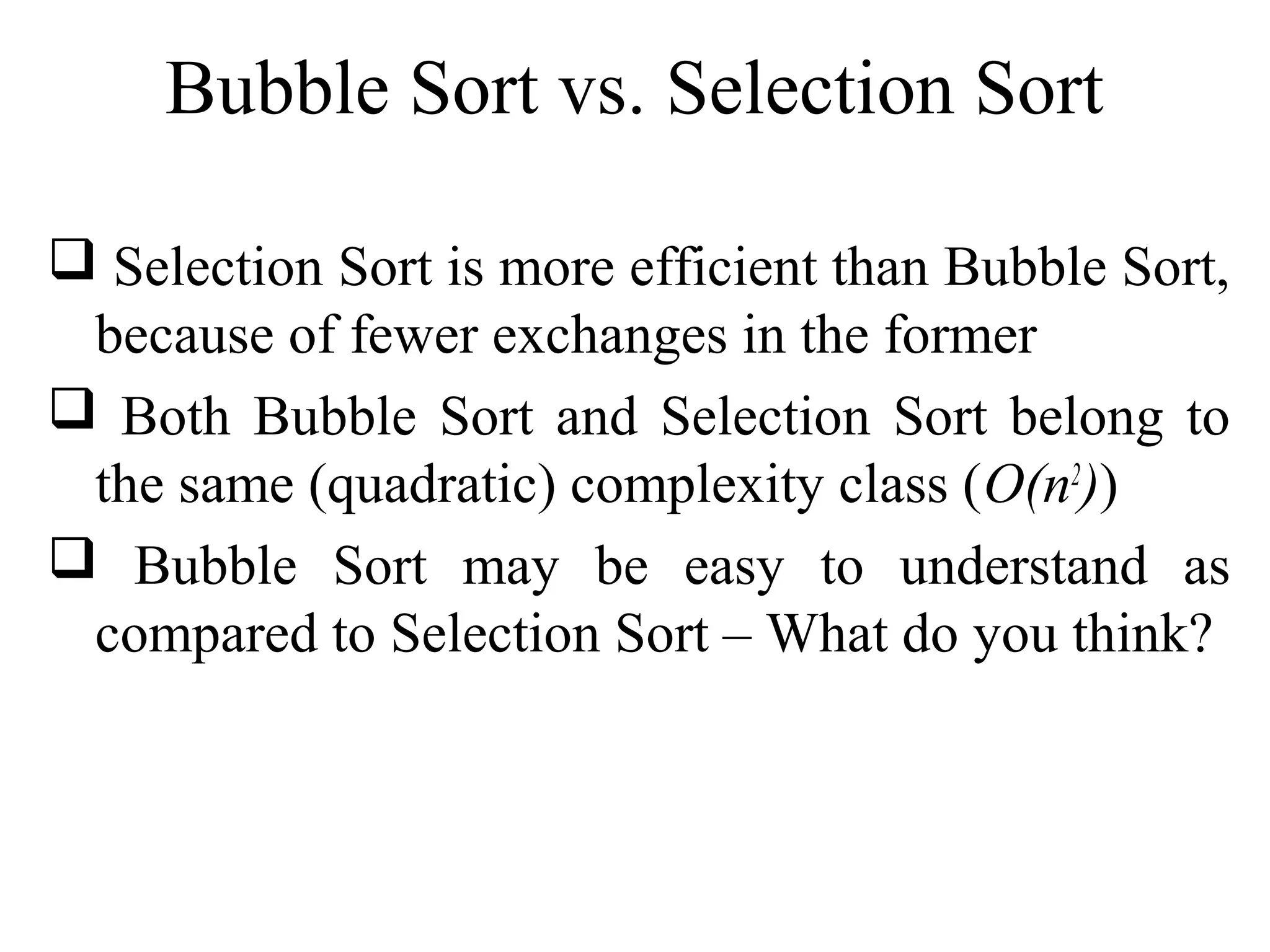
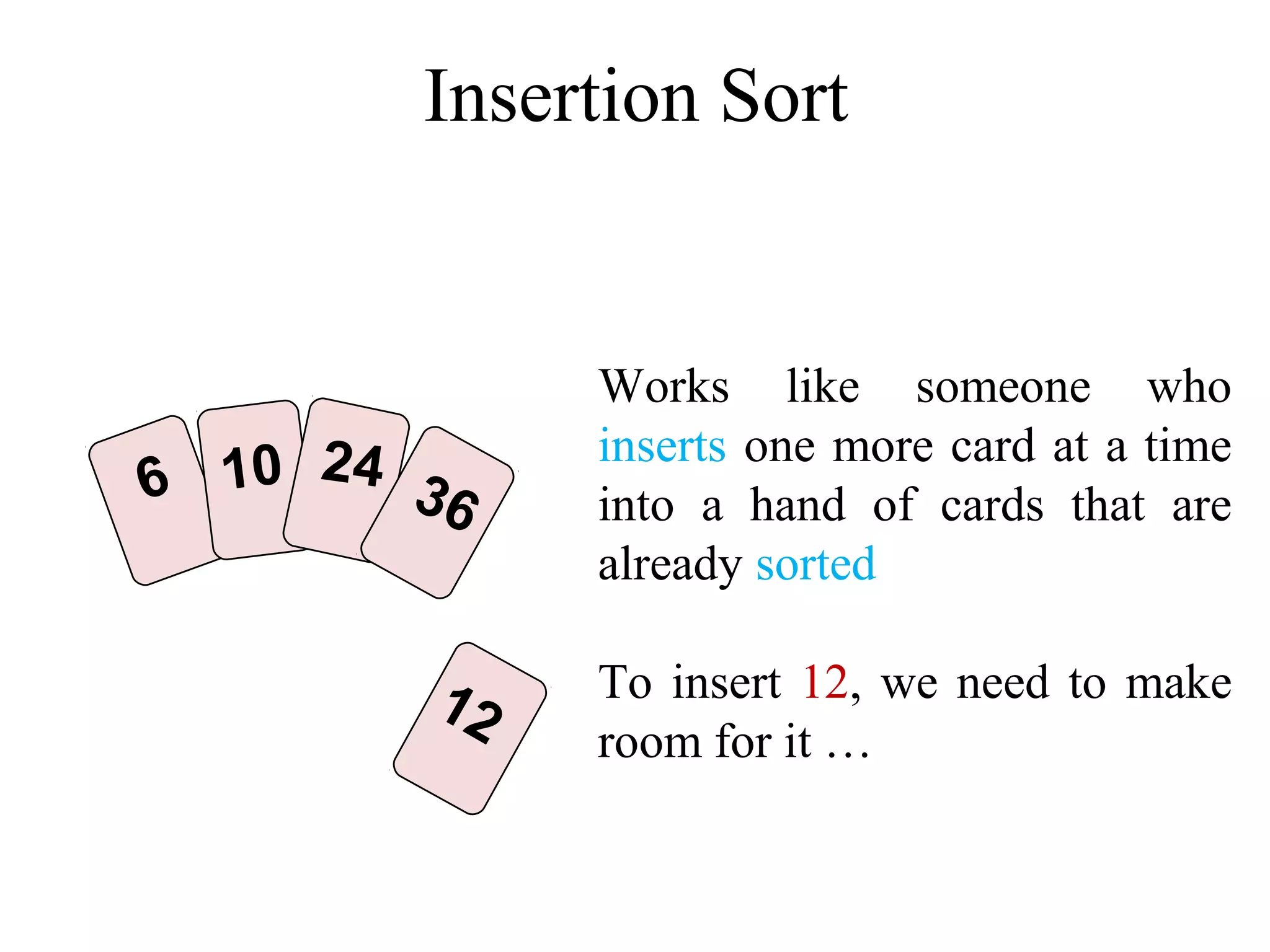
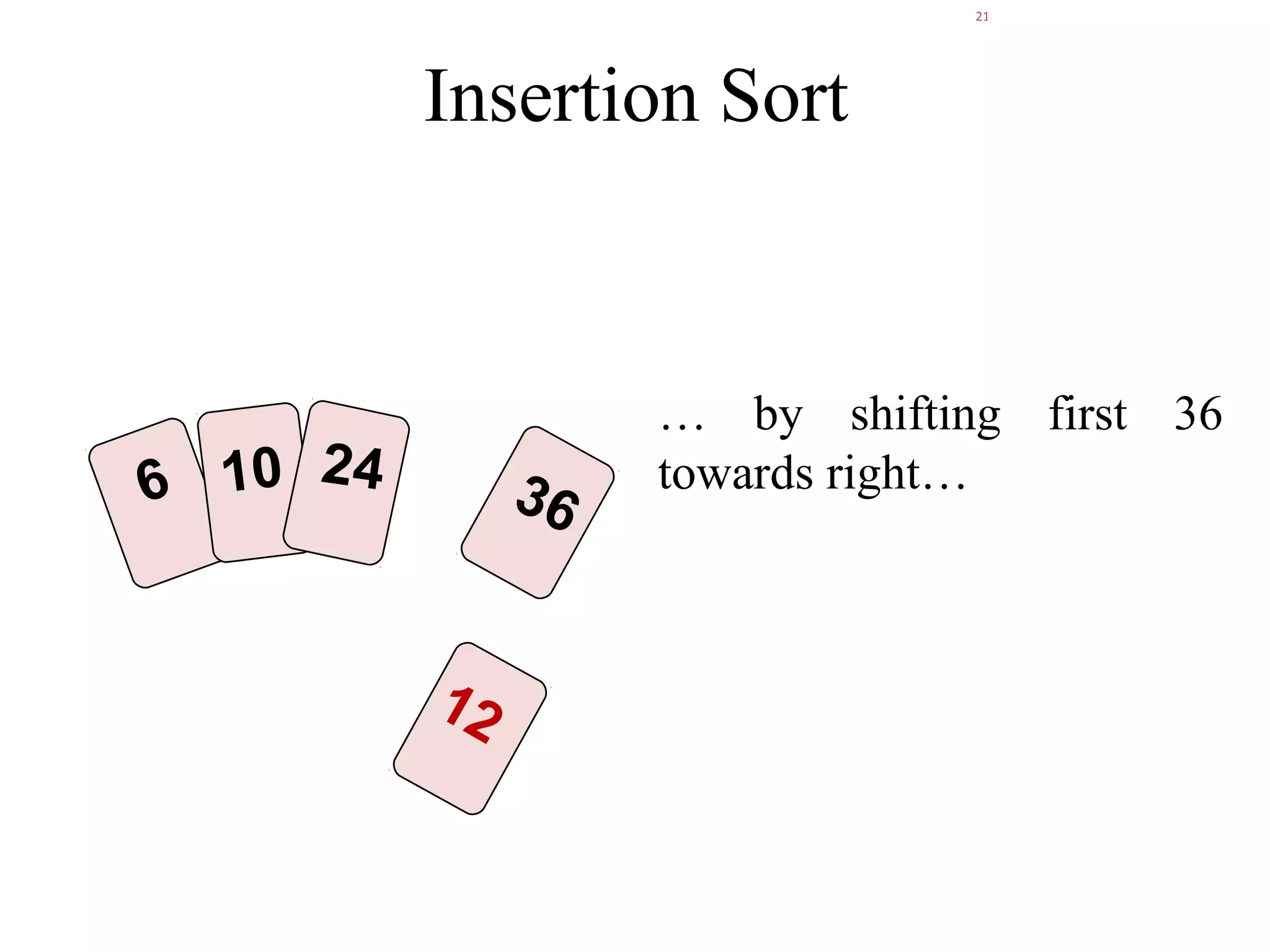
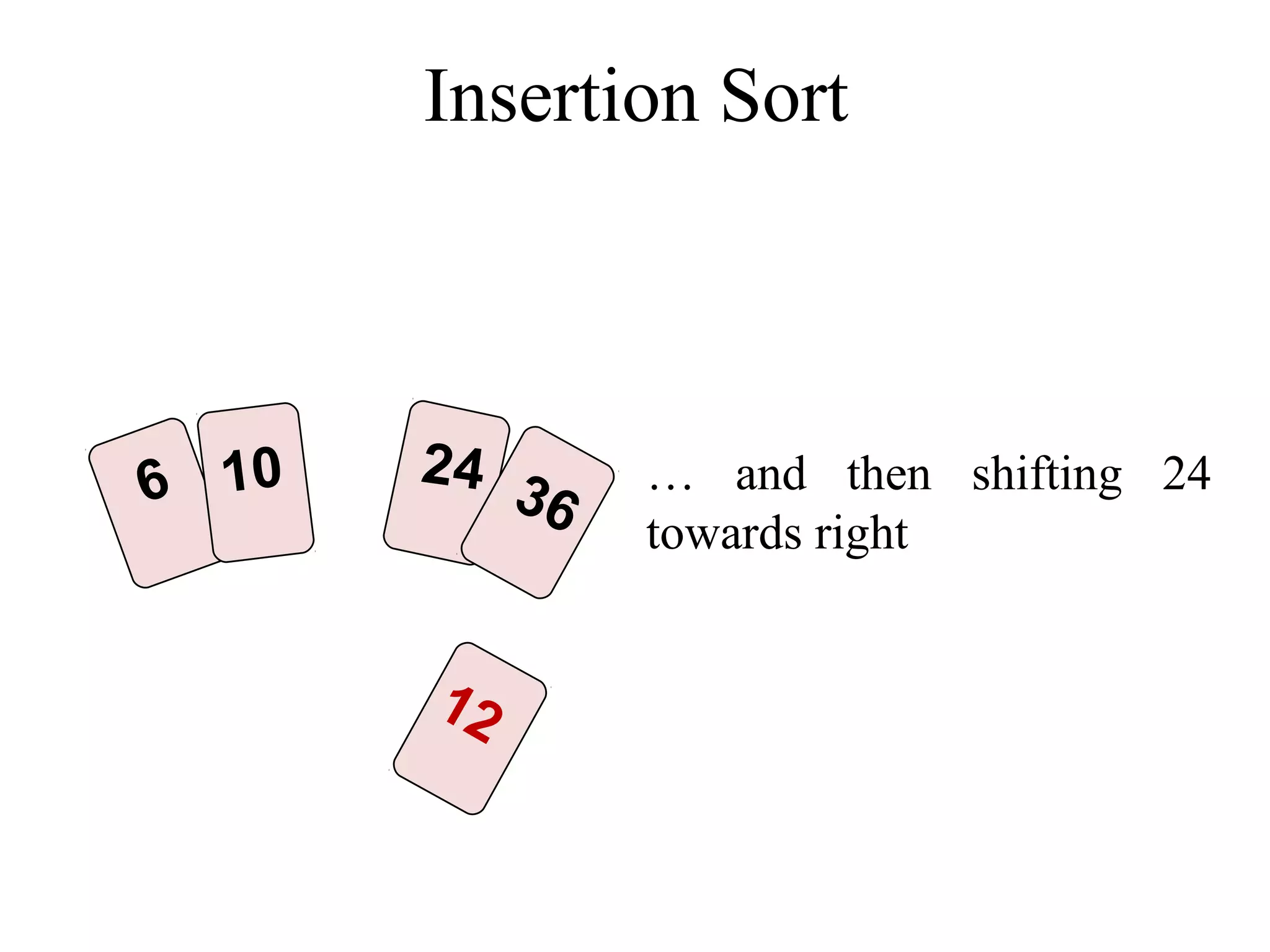
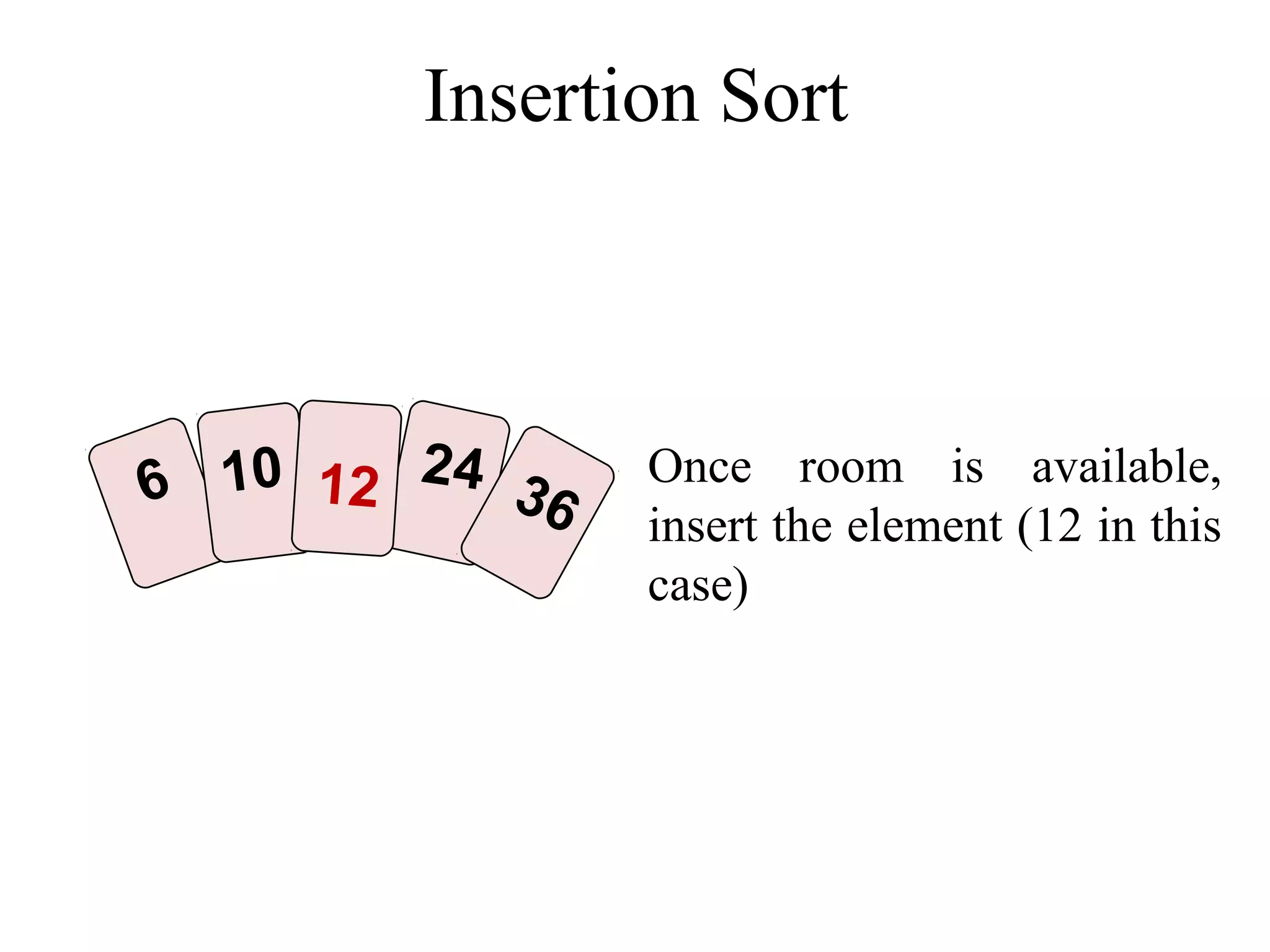
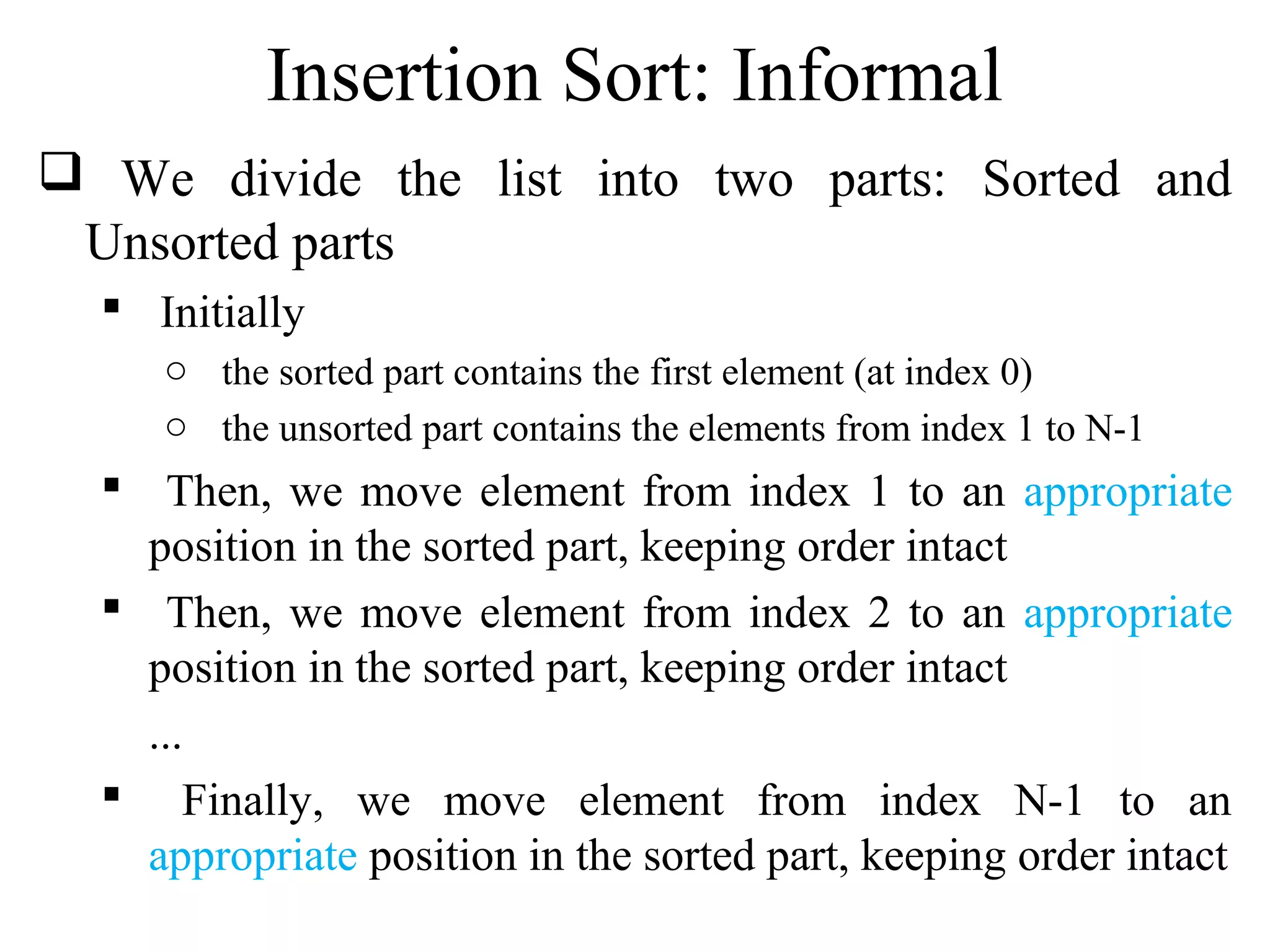
![Insertion Sort Algorithm in Java
void insertionSort(int List[]){
int temp;
int size = List.length;
for (int i = 1; i < size; i++){
int j = i;
temp = List[i];
while (j > 0 && temp < List[j - 1]){
List[j] = List[j - 1]; // right shifting
j--;
}
List[j] = temp;
}
}
Time complexity of the Insertion Sort algorithm is O(n2). Think why?](https://image.slidesharecdn.com/part4basicsortingalgorithms-140828232256-phpapp01/75/Data-Structures-Part4-basic-sorting-algorithms-25-2048.jpg)
